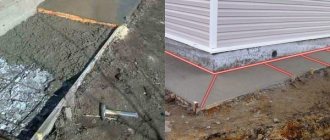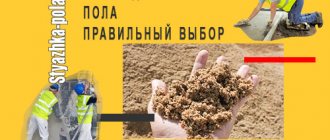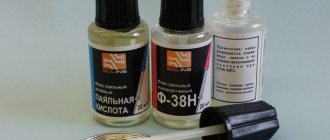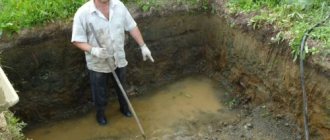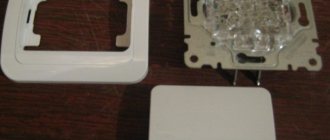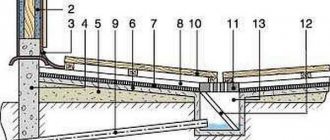Despite the similarities in production technology, white cement differs significantly from its gray counterpart in characteristics. Let's figure out where this variety is used.
Today, the building materials market offers dozens of varieties of cement, which differ significantly in their properties. White cement is one of the most noticeably different varieties, both in price and in the result of application. Let's understand the intricacies of using this material and determine the limits of its applicability. We will also try to describe the main brands and provide recommendations from professionals for making white cement mortar.
The use of white cement in construction
This kind of material can be found often. For example, it is used for finishing facades. It is used to make plaster, paving slabs, dry mixes, mortars, etc. Sculptures, decor, columns, borders, steps, etc. are made.
It is also used in the manufacture of self-leveling floors. It is often used to make screed and brickwork.
Where is white cement used?
The most common answers to the question “Why do we need cement?” is the production of concrete products and mortar for laying walls or pouring foundations. However, the white variety has a much wider area of use. It includes the following types of construction and finishing works:
- Production of white concrete. This material is widely used in gardening construction (manufacturing railings for stairs, statues, stucco moldings), the production of fences, curbs, and paving slabs.
- Manufacturing of various products for interior decoration: facing tiles, relief decorations, stucco moldings, busts, etc.
- Plastering work on facades and other critical areas. White cement mortars are highly durable and less susceptible to cracking.
- Production of artificial stone slabs.
In addition, white cement is a component of many dry mixes. These are tile adhesives and tile grout, compositions for applying decorative plaster and gluing facing tiles, and much more.
It is quite possible to make masonry mortar or screed mixture based on white cement. It will give high strength to walls and floors and will last for many years. Unfortunately, such use is often unprofitable due to the high cost of white cement.
White cement for casting sculptures
For decoration or sculptures, this is the best material. For the solution prepare:
- Capacity,
- Wire (aluminum or steel),
- Trowel, spatula,
- White cement M400,
- Sand, plasticizers (PVA),
- Construction mesh and film.
The master can sculpt small sculptures with his hands, as when sculpting plasticine. Other products require a frame. This is what the wire is for.
Sand is sifted and mixed with cement - proportions 3:1. Then water and plasticizer are poured. After the sculpture is completed, it must be carefully covered with film and left to dry for about 10 days. After this, remove the film and prime the product. Then they paint with paints.
How to make an artificial stone boulder from cement, see the article at the link.
White as snow, strong as stone
The basis of the substance is low-iron clinker, with which kaolin, chloric salt, gypsum, and crushed limestone (chalk) are mixed in the required ratio and order. The components include the smallest amount of manganese or coloring inclusions. The specific color is provided by the combination of kaolin and limestone.
A special manufacturing method gives the substance not only color, but also increased strength (up to 59 MPa). Depending on its indicators, 3 types of cement are distinguished, each of which demonstrates good weather resistance and resistance to low temperatures and the negative effects of precipitation:
- M400 has an average hardening speed, low sulfate resistance, medium and high shrinkage deformation.
- M500 exhibits medium hardening rates, average sulfate resistance and low shrinkage deformation.
- M600 means insignificant deformation during shrinkage, low sulfate resistance, high hardening speed.
According to the degree of color purity, the material is divided into 3 grades: highest grade - from 80 to 85%, 2nd grade - 75%, 3rd grade - 68%.
A distinctive property of the powder substance is its high degree of grinding. It is about 4500 sq.cm/g. For gray analogs, the indicator is 3500 sq.cm/g.
These characteristics determine the price, application options and appearance of the products. All parameters are indicated on their packaging.
Since the material is considered a new product, imported dry granules prevail among the products presented on the construction market, in particular products of the Swiss financial and industrial group Holcim.
Preparation of white cement mortar without sand at home
As a rule, a solution with only water is not made. It will crack over time. Therefore, a solution with fillers is prepared. Regular sand is not suitable.
Fillers for white cement:
- marble flour,
- quartz sand,
- or washed river sand.
A truly white solution is obtained only with the addition of marble flour. But the price of filler will be higher than the price of sand.
It is recommended to do a test at the beginning, dilute a little solution. Let it dry and then you can evaluate and summarize.
Features of white cement production
The mixing of raw materials is carried out carefully and carefully. Upon contact with certain substances, it is capable of changing properties. Violating the technology and using the wrong tools can lead to streaks or poor color quality.
In order to prevent the possibility of defects, clean working containers and substances are used. In some cases, equipment and surfaces in contact with the material are degreased. Metal parts are treated with anti-corrosion compounds and then covered with a layer of concrete. Compliance with all conditions allows us to maintain the purity of raw materials.
Grinding is carried out in mills equipped with plates made of porcelain, silicon and basalt. After some time, the resulting mixture is sent to special firing chambers. According to the technology, they use gas or liquid fuel burners that do not form soot and ash residues.
The light shade of white cement is obtained due to the composition and special technology of its production.
After calcination to 1200...1400°C, the clinker is subjected to rapid cooling in an oxygen-free environment (1200...200°C). This hardening enhances the strength and frost resistance of cement.
To achieve pure whiteness, use the method of rapid cooling with water (1500...500°C). Then the mass is dried in a special drum at a temperature of 300°C. This is how a brand with a degree of reflection of up to 90% is obtained.
How to mix white cement with sand, proportions
Mix sand (3 parts), cement (1 part), filler (2 parts). Dilute the solution in a clean container. Marble chips (fractions 10-15 mm) are used as a filler for filling the floor.
You can make such a material yourself from lead white (1 part) and mastic (6 parts). Everything is ground into powder and mixed with melted white wax. Used for grouting joints. To obtain color, add mineral pigment (20:1) to the dry mixture.
Areas of use
- Production of reinforced concrete forms and structures. The dry binder is used in the production of staircases and decorative interior elements.
- Preparation of mixtures for self-leveling floors. When forming a concrete mass, fillers are added: purified quartz or washed river sand, marble flour. This type of concrete differs from standard concrete in the absence of coarse crushed stone and, accordingly, in high shrinkage.
- Production of facing bricks.
- Production of paving slabs and curbs. They can be either completely white or painted with special dyes.
- Formation of mixtures for masonry mortars and joint grouts. As a filler, gypsum or crushed chalk is added to the composition of the latter. The hardening speed depends on this.
The scope of application of cement also includes the creation of cast sculptures for outdoor use. Such objects can last at least 10 years.
How is white cement without a sand component used?
Non-professionals have to lay white cement much less often. A type of bulk building material in its pure state is unique in its characteristics and has far from the only positive property. It can also be applied without the sand component if it is necessary to create a perfectly white coating layer. The rules by which cooking is carried out are still the same. The author of a sculpture or landscape element determines the proportions himself to obtain the optimal structure or product.
Composition of white cement and technology of its production
The basis of white cement is low-iron clinker without manganese and chromium, enriched with mineral additives, gypsum, limestone and hypochlorous salts. It is the latter component that gives the material its characteristic color. Cement acquires proper strength properties after firing, followed by rapid cooling in an oxygen-free environment. In this case, for burning clinker, gaseous or liquid fuel is used, which does not produce soot and ash during combustion. The basic raw material of white cement (clinker) undergoes a crushing operation in special mills equipped with a lining using basalt, porcelain or silicon slabs. During this process, a much higher grinding fineness of the material is achieved than with traditional brands of cement (4500 cm2 per gram versus 3500 cm2 per gram). The mixture is crushed in one of two ways - dry or wet. Moreover, in the first they use shaft furnaces, and in the second - mills and chatterboxes with water.
Commercial white cement is produced in two strength grades - M400 and M500 with three possible whiteness levels:
- 1 - highest grade with a reflection coefficient of 80%;
- 2 - with a reflection coefficient of 75%;
- 3 - with a reflection coefficient of 68%.
The setting time of the material is 45 minutes, the period of complete drying of the mortar mixture based on it is 12 hours, hardening to a degree of 60% is no more than 16 hours.
Application of white cement
As you might guess, white cement is mainly used for decorative purposes: decorative plaster and putty, making decorative stone, tiles, and bricks. Stucco molding, various architectural forms and grout for seams.
In addition, white cement is used (albeit rarely) to make mortars for brick and block masonry. When laying bricks, metal mesh and other metal products should be embedded in the mortar at least 3 centimeters. If this is not done, rusty spots will appear on the white surface over time.
White cement: properties and composition
The special light shade of cement is achieved through a specific composition and specialized production technology.
White cement is created on the basis of a special - low-iron - clinker, to which are added minerals such as gypsum, chlorinated salts and limestone, giving the material a whitish tint. Thus, the main raw materials used in the production of white Portland cement are chalk and kaolin. They contain very little coloring oxides of iron and manganese. The increased strength of white cement is achieved by sharply cooling the clinker in an oxygen-free environment immediately after firing. In this case, gaseous, liquid or other fuel is used as fuel in furnaces, the combustion of which does not produce ash or soot particles. This prevents coal ash from entering the clinker and contaminating it. Since flux minerals are formed by iron, in its absence the firing temperature must be significantly increased. Sometimes the role of a flux mineral is played by cryolite added to the charge.
Grinding of clinker and crushing of raw materials occurs in mills/crusher, which are equipped with a special lining. At this stage, basalt, silicon or porcelain slabs are used to grind raw materials. The grinding fineness (specific surface area) of white cement is significantly higher (4500 cm²/g) than that of standard gray cement (3500 cm²/g).
White cement is produced in two grades - M500 and M400. However, there are three varieties of this material. The division is made depending on the degree of whiteness of the cement:
1 (highest) grade – reflection coefficient is 80-85%;
2nd grade – reflection coefficient is 75%;
3rd grade – reflection coefficient is 68%;
On average, the material sets in 45 minutes, and it takes 12 to 24 hours to dry completely.
You can learn more about the types and markings of cement from this article
Features of production, properties and applications of white cement
Small-piece pre-fabricated concrete products based on white cement are presented in a wide range - these are terrazzo slabs and artificial stone for flooring, finishing facades and premises, paving slabs and wall blocks. In the production of small-piece concrete products, various technological equipment is used. The production of terrazzo slabs involves vibration-vacuuming followed by grinding and polishing the surface of the products, which, in combination with painting the cement matrix in bright colors and the ability to select the fractional composition of decorative aggregates, allows you to imitate natural granite of various colors.
A distinctive feature of artificial stone is its subtle imitation of the color and texture of various rocks, which is achieved by laying cast fine-grained concrete mixtures in textured plastic forms. In the production of facing bricks and blocks using semi-dry vibropressing technology, the technique of splitting products is used, which makes it possible to create a relief “torn” surface. The main advantage of using white cement for the production of small-piece concrete products is its high strength, which is a reliable guarantee of the durability of the final products. At the same time, the high light reflectance of white cement makes it an ideal basis for obtaining bright and stable coloring of products.
The production of dry construction mixtures is one of the largest segments of white cement consumption. It is widely used in the production of decorative plasters for exterior and interior use, putties for finishing the leveling of walls and ceilings in rooms with high humidity, tile adhesives for laying translucent tiles, white marble, mosaics, as well as grout for joints and self-leveling floors.
Dry mixtures based on white cement are very technologically advanced, easy to apply and level, while creating fine textures. The plasticity, cohesion and homogeneity of mixtures based on white cement allows finishing work of any complexity both indoors and outdoors. And the high strength and resistance of the hardened solution to alternate freezing and thawing guarantees its durability even under conditions of intense atmospheric influences.
